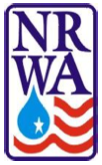 from NRWA
from NRWA
- It is projected that 37% of water utility workers and 32% of wastewater utility workers will be eligible for retirement within the next decade.
- Source: Ritchie, Ed. The Workforce Gap in Water Efficiency. January-February 2011.
http://www.waterefficiency.net/WE/Articles/12949.aspx
- Source: Ritchie, Ed. The Workforce Gap in Water Efficiency. January-February 2011.
- The anticipated loss of current utility employees is between 30% and 50% within the next 10 years.
- Source: Water Environment Federation. Water Sector Workforce Sustainability Initiative. 2010. http://www.waterrf.org/ProjectsReports/PublicReportLibrary/4206.pdf
- The Bureau of Labor Statistics projects that employment of drinking water and wastewater operators is expected to grow by 20% between 2008 and 2018, which is much faster than the average for all occupations. Job opportunities are projected to be excellent, both because of the expected much faster than average employment growth and because the retirement of the baby-boomer generation will require that many operators be replaced.
- Source: Occupational Outlook Handbook, 2010-2011 Edition. US Bureau of Labor Statistics
http://www.bls.gov/ooh/
- Source: Occupational Outlook Handbook, 2010-2011 Edition. US Bureau of Labor Statistics
- It is estimated there are 381,471 total U.S. water workers.
- Source: Census Bureau, 2014 Annual Survey of Public Employment & Payroll:
Sewerage 130,606, Water Supply 181,053, additional 22.4% for private water systems
- Source: Census Bureau, 2014 Annual Survey of Public Employment & Payroll:
- More than 80 percent of the U.S. population receives its drinking water from “public” drinking water systems, and about 75 percent of the U.S. population has its sanitary sewage treated by “public” wastewater systems. The U.S. EPA defines a “public water system” as providing water for human consumption through pipes or other constructed conveyances to at least 15 service connections or serving an average of at least 25 people for at least 60 days a year. For apprenticeships, we are concerned mainly with “Community Water Systems” which are typically recognized as community water suppliers requiring a workforce to maintain and operate the utility. EPA defines a Community Water System (CWS) as a public water system that supplies water to the same population year-round.
- Source: U.S. Environmental Protection Agency
- EPA lists 50,366 Community Water Systems (CWS) in the U.S – 46,014 of these CWSs serve a population of less than 10,000 persons.
- Source: U.S. EPA Safe Drinking Water Information System (SDWIS)
2017 Agenda for NRWA Workforce Advancement Center
- Design Registered Apprenticeship standards for water workforce (by Spring 2017).
- Register new apprenticeship program with the U.S. Department of Labor’s Office of Apprenticeship (Summer).
- Promote the new Water Workforce programs through marketing and technical assistance (Fall).
- Begin“earn and learn”Water Workforce Registered Apprenticeship program;enroll initial apprentices and employers (Winter).
- Administer the program nationally by managing apprentices, employers, training, mentors, certificates of Completion, etc. (Winter).
- Assure that all participants are provided high quality training, education and professional opportunities (long term).
The NRWA Workforce Advancement Center will also work to will develop career pathways into the water sector for high school students, establish industry training certifications, connect workers with employers through a career center network, and serve as an online clearinghouse for resources.
___________________________________________________________________________________________________
The National Rural Water Association is the country’s largest public drinking water and sanitation supply organization with over 30,000 members. Safe drinking water and sanitation are generally recognized as the most essential public health, public welfare, and civic necessities.
www.nrwa.org | Headquarters: 2915 S. 13th Street, Duncan, Oklahoma | (580) 252-0629
